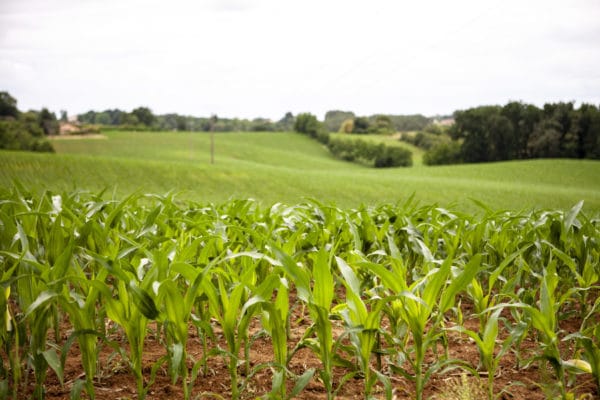
CHOOSING THE RIGHT HYBRID
Hybrid choice is today’s key to modern maize growing.
Hybrid choice is what makes yield (potential, earliness) possible in a given weather timeframe, and secures the specific traits (stress tolerance, disease tolerance etc) that enable one to achieve their objective with greater or lesser certainty.
Current breeding produces hybrids with more early vigour (emergence vigour, cold tolerance) and more robust at the end of their growth cycle (good upright stalk posture and dry-down rate at the end of the cycle). These two characteristics – which set the latest hybrids apart from the others – allow one to grow more productive hybrids within a shorter period of time. Fast dry-down at the end of the growth cycle is an increasingly sought-after criterion, the reason being to secure a shorter cycle for an otherwise late plating date, to enable the establishment of a successive crop, or to save on drying costs. Livestock growers tend to prefer plants with longer stay-green (indicating a “feed” type of crop), which are easier to ensile. However, the main criteria farmers look for are the same in all countries: yield potential, consistent performance, and water stress tolerance.

The mechanical qualities of hybrids – namely their resistance to early lodging (during crop development) or late lodging (caused by Fusarium root rot) – have made such progress during the past 30 years that they are now on every farmer’s minimum must-have list. These traits are now such that they allow one to wait for the right harvest conditions or even harvest at the end of winter, as is the case in some countries. Remarkably, stalks have been gaining in vigour with no detriment to the feed maize digestibility.
The history of maize breeding proves that yield growth is largely linked to increased hybrid “hardiness”. While one may say that generally, the more recent the hybrid, the better it will secure a maximum number of traits, differences do exist among varieties, making it possible for the buyer to choose hybrids that will meet their specific requirements, such as final use (grains or silage) or local climate constraints (early frost, possibility of standing crop dry-down).
The table below provides a hierarchical list of the various criteria that producers need to keep in mind when choosing their maize hybrids based on use and crop growing environment.
Choosing the right hybrid – criteria and final use
Grain maize growing in good conditions or well-irrigated
Decisive criteria
- Grain yield potential
- Earliness fit for an available sum of temperatures that allows harvesting at less than 32 percent kernel moisture
Complementary criteria
- Suitable for high-density plantings and lodging- resistant
- Can be harvested early if it dries down in the field (as a standing crop)
- Threshing quality (resistance)
Grain maize grown in difficult conditions or under water-stress
Decisive criteria
- Grain yield potential
- Yield consistency
- Water stress -tolerant around flowering
Complementary criteria
- Suited for early planting (cold-tolerant), thus enabling the avoidance strategies
- Fusarium-resistant at the end of the crop growth cycle
- Lodging-resistant at the end of the crop growth cycle
Feed maize : Harvested as whole plant
Decisive criteria
- Whole plant yield potential
- Feed quality and organic matter digestibility (OMD) as whole plant
- Earliness suited for harvesting at 30-35 percent DM/whole plant
Complementary criteria
- Suitable for high-density plantings and is lodging-resistant during crop development
- Size
- Stay-green
High-moisture maize (HMC)
Decisive criteria
- Grain yield potential
- Earliness enables harvest at 34-38 percent kernel moisture
Complementary criteria
- Disease-tolerant
Organic maize
Decisive criteria
- Disease-tolerant
- Early vigour
Complementary criteria
- Yield potential and consistency
Biofuel maize: methane (biogas) or ethanol
Decisive criteria
- Yield potential of harvested parts
- Optimum earliness: 27-37 percent DM/whole plant – for biogas; 32 percent kernel moisture – for ethanol (grain biomass or total biomass)
Complementary criteria
- Disease-tolerant
- Lodging-resistant (“clean” harvest)